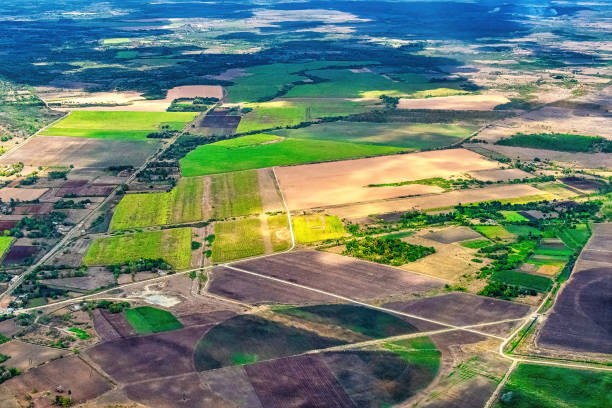If you own property in Los Angeles, zoning rules shape what you can build and how you can use your land. But sometimes, your site doesn’t fit neatly into the city’s strict zoning code. Maybe the lot is oddly shaped, on a slope, or just too small for the design you want.
Table of Contents
ToggleThat’s when people start asking, “Do I need a zoning variance?”
A zoning variance is a legal exception. It allows property owners to adjust certain rules — like building height, setbacks, or parking — when the standard code doesn’t make sense for their specific lot. Variances aren’t a free pass. They’re only granted when you can prove that your property faces unique challenges or hardships that make full compliance unfair or impractical.
At JDJ Consulting, we often explain to clients that a variance isn’t about getting around the rules. It’s about making the rules work fairly for your property.
Zoning Variance Process in Los Angeles 🏗️
Source: Los Angeles Department of City Planning (LADCP)
What Is a Zoning Variance?
In simple terms, a zoning variance is permission from the city to slightly bend zoning laws for one specific property. It doesn’t change the zoning itself — it just grants an exception to a particular rule.
Let’s say your lot is narrow, and the side setback requirement makes it impossible to build a standard-sized home. You can apply for a variance asking to reduce that setback. If the city agrees, you get approval to build closer to the property line while still following all other zoning standards.
Variances exist because Los Angeles is full of irregular lots and old neighborhoods that don’t always match today’s zoning map. Without a variance process, many properties would be unusable or unfairly limited.

Here’s how most experts describe it:
A variance is a case-by-case adjustment that ensures property owners can use their land reasonably, even when strict code compliance creates hardship.
Common Types of Variances in Los Angeles
There isn’t just one kind of variance. Depending on your project, you may need different types of relief. Here are the most common examples:
- Area Variance: The most typical type. It covers things like setbacks, height limits, lot coverage, and parking.
- Yard Variance: Used when property lines or slopes make it difficult to meet required yard dimensions.
- Fence or Wall Height Variance: Needed when you want to build a fence higher than allowed by code.
- Use Variance: Rare in Los Angeles. It lets a property be used for something not normally allowed in its zone — for example, converting a small house into a business space.
- Parking Variance: Used when a site can’t provide the full number of required parking spaces due to lot shape or size.
At JDJ, we help clients figure out which category their project falls under before applying. Choosing the correct variance type matters because the city reviews each one differently.
Do You Actually Need a Variance?
Not every project that seems “out of code” needs a formal variance. In many cases, other approval paths — like a Conditional Use Permit (CUP) or a minor adjustment — might solve the issue faster.
Here’s a simple way to tell if you really need a variance.
Ask yourself these questions:
- Is my project otherwise allowed under the current zoning?
- If not, you may need a CUP or rezoning instead of a variance.
- Am I asking for a change to a physical standard — like height, setback, or parking — not the land use itself?
- That’s typically a variance issue.
- Does my property have a unique feature — odd shape, slope, or size — that makes it harder to meet the rule?
- That’s a strong variance factor.
- Would strict enforcement of the code stop me from using my property in a reasonable way?
- That’s one of the main legal tests for approval.
- Can I show evidence that I’m not asking for a “special privilege”?
- In other words, your request must be fair and consistent with what similar properties could have.
If you answered yes to at least two or three of these, there’s a good chance you’ll need to apply for a zoning variance.
Quick Example
Imagine a homeowner in the Hollywood Hills who wants to add a second story to a 1940s house. The property sits on a steep slope, and the new structure would slightly exceed the height limit on one side. Because the slope makes it impossible to stay under the city’s height cap, the homeowner can request a variance.
But if the same homeowner wanted to turn the property into a short-term rental, that wouldn’t qualify for a variance. That situation involves use, not physical hardship — and would fall under a different type of permit.
When a Consultant Can Help
Many property owners spend months trying to figure out if they even need a variance. That’s where a zoning consultant or permit expeditor can save time.
At JDJ Consulting, we review your site conditions, zoning map, and building plans to identify whether a variance is truly necessary — or if there’s a simpler path. In some cases, we’ve helped clients avoid a long variance process by recommending a design tweak or an administrative adjustment instead.
The Five Mandated Findings for a Variance in Los Angeles
Getting a variance approved isn’t just about having a good reason. The city looks for five specific findings under the Los Angeles Municipal Code (LAMC Section 12.27). These are the official tests your application must pass.
If you miss even one, your variance can be denied. That’s why most successful projects rely on careful documentation and expert preparation.
Top Reasons for Zoning Variances in Los Angeles
Source: JDJ Consulting Group research, 2025
Talk to JDJ Consulting Group about your property’s zoning challenges.
Let’s break these findings down in simple language.
1. Practical Difficulties or Unnecessary Hardship
This is the heart of every variance case.
You must show that following the zoning rule exactly would cause a practical difficulty or unnecessary hardship unique to your property.
For example, maybe your lot slopes so sharply that meeting the height or setback rule makes it impossible to build a safe structure. The hardship must come from the property’s physical conditions — not from your personal budget or design preferences.
Tip: Photographs, surveys, and elevation drawings help prove hardship clearly.
2. Special Circumstances or Site Conditions
The city also checks whether your property has special features that make it different from others in the same zone.
This could mean:
- An irregular lot shape or narrow frontage.
- A steep hillside or easement that limits buildable area.
- A location near a flood channel or protected tree zone.
These site-specific factors show that your request isn’t arbitrary — it’s based on real, physical constraints.
3. Preservation of Property Rights
This finding is about fairness.
You need to show that granting your variance would give you the same reasonable property rights other owners already enjoy nearby.
For instance, if neighboring lots built similar-sized homes but your lot can’t meet the same setback without a small variance, it’s fair to argue you deserve equal opportunity to develop.
4. No Special Privilege or Inconsistency
A variance can’t give you a special privilege that other property owners wouldn’t have.
The City wants to make sure you’re not getting an unfair advantage — like building taller just for aesthetic reasons. Your request must stay consistent with the intent and spirit of the zoning code.
Simple rule: If your variance would make your project fit better with the neighborhood rather than stand out, that’s a good sign.
5. No Adverse Impact on Public Welfare or the General Plan
Finally, the City ensures that granting your variance won’t harm neighbors or conflict with the Los Angeles General Plan.
That means:
- No added noise or safety issues.
- No parking shortages or blocked access.
- No design that conflicts with the area’s planned land use.
If your project stays compatible with community goals, this finding is usually easy to satisfy.
Why These Findings Matter
Every variance hearing centers around these five points. You’ll need to prove each one with evidence — not just opinions.
At JDJ Consulting, we help clients prepare “findings narratives” that address each point clearly and include maps, photos, and design exhibits. A well-organized submission makes a major difference in approval outcomes.
Variance vs. Conditional Use Permit vs. Rezoning
Many property owners confuse these three processes. They all deal with exceptions to zoning, but they solve different problems.
Here’s a simple comparison to help you see the difference:
| Approval Type | Purpose | Typical Use Case | Decision Authority | Average Processing Time |
| Variance | Grants relief from physical standards (setback, height, parking). | Irregular lot shape, slope, or size causing hardship. | Zoning Administrator or Area Planning Commission. | 4–12 months depending on case. |
| Conditional Use Permit (CUP) | Allows a special use not normally permitted but potentially compatible. | Opening a restaurant, daycare, or church in a residential zone. | Zoning Administrator or City Planning Commission. | 6–14 months depending on complexity. |
| Rezoning (Zone Change) | Permanently changes the property’s zoning designation. | Converting industrial land to residential or mixed-use. | City Council (after Planning Commission review). | 12–24 months, often with public hearings. |
In short:
- Variance = Adjusting a rule for one site.
- CUP = Asking to use your land differently.
- Rezoning = Changing the rule entirely.
If your project only needs relief from dimensions or setbacks, a variance is usually enough. If it involves a new land use, you’ll likely need a CUP or rezoning instead.
Step-by-Step: How to Apply for a Zoning Variance in Los Angeles
Applying for a variance can feel like a long process, but it’s manageable when you know the steps. Each phase requires careful timing, the right paperwork, and clear communication with the Department of City Planning.

Here’s how it typically works.
Step 1: Pre-Application and Feasibility Check
Before you file anything, start with a zoning feasibility review. This step helps you confirm that a variance is the right approach.
You or your consultant should:
- Review the zoning map and LAMC standards for your property.
- Identify exactly which standards need relief (setback, height, etc.).
- Visit the Department of City Planning website or speak with a planner for guidance.
- Collect photos, surveys, and drawings that explain your site conditions.
At JDJ Consulting, this early review saves clients time and money. Many projects we see don’t need a variance at all — small design adjustments or administrative approvals can solve the problem faster.
Step 2: Prepare Your Application Materials
Once you confirm that a variance is needed, gather your materials. The City requires several documents, and missing even one can delay processing.
Here’s what you’ll typically need:
- Application Form: Available on the Los Angeles City Planning website.
- Project Description: A brief, factual explanation of your request.
- Findings Narrative: A written response addressing the five mandated findings discussed earlier.
- Site Plans and Elevations: Prepared by a licensed architect or designer.
- Photographs and Context Maps: Show your property and its surroundings.
- Environmental Forms (CEQA): Depending on project size.
Pro Tip: Label every page and reference exhibit numbers in your findings narrative. It helps reviewers follow your evidence easily.
Step 3: File Your Application and Pay Fees
After you’ve completed your packet, submit it through the City’s Planning portal or in person (depending on your project type).
Fees vary based on square footage, project scope, and the number of variances requested. Expect to pay anywhere from a few thousand dollars to over ten thousand for large commercial projects.
Once filed, City staff will review your materials for completeness before scheduling your case for a public hearing.
When Do You Need a Zoning Variance in Los Angeles?
In Los Angeles, zoning laws control how every property can be used and developed. They cover height limits, setbacks, parking, and even the type of business allowed on-site. But not every project fits neatly within those boundaries. That’s where a zoning variance can come in.
A zoning variance is special permission from the city that allows a property owner to use land in a way that doesn’t fully comply with local zoning rules. It’s not a rezoning—it’s more like an exception to the rule, approved only under specific conditions.
Common Situations Where You May Need a Variance
Below are a few real-world examples where property owners in LA often seek a variance:
| Situation | Example in Los Angeles |
| Lot Size Limitations | Building a small home on an undersized hillside lot in Hollywood Hills |
| Setback Requirements | Adding an accessory dwelling unit (ADU) too close to a property line in Silver Lake |
| Height Restrictions | Building a rooftop deck that slightly exceeds the height limit in Venice |
| Parking Adjustments | Converting a warehouse to offices without adding the required number of parking spaces |
| Unique Shape of the Lot | Constructing on irregularly shaped lots where meeting all requirements isn’t practical |
Each case is evaluated individually. The city will ask whether your request creates problems for neighbors, public safety, or the environment.
If your request is based solely on convenience or profit, it’s usually denied. The city expects a valid hardship that isn’t self-created—something about the property itself that makes strict compliance unreasonable.
How to Apply for a Zoning Variance in LA
The variance process in Los Angeles involves multiple steps and several city departments. It’s detailed and often time-consuming, but knowing the process helps you prepare better.
1st Step: Confirm Your Zoning Designation
Before filing anything, check your zoning designation using the ZIMAS (Zone Information and Map Access System). It’s an online city tool that shows your property’s zoning, overlays, and other land-use restrictions.
This will tell you if your planned project actually conflicts with current zoning or if it falls under existing allowances, like conditional uses or ministerial approvals.
2nd Step: Meet with a Planning Staff Member
The next step is scheduling a pre-application meeting with the Department of City Planning. Here, you’ll discuss your proposal, potential conflicts, and any required documents. This step helps avoid surprises later.
3rd Step: Prepare Application Materials
You’ll need to submit:
- A completed Master Land Use Application (MLUA)
- A detailed site plan showing existing and proposed structures
- A justification statement explaining why your case meets the findings for a variance
- Supporting documents like photographs, surveys, and sometimes environmental review forms
Applications are submitted through the Planning Case Submission Portal on the city’s website.
4th Step: City Review and Public Hearing
After submission, your application goes through city review. The Department of City Planning assigns a case planner who analyzes your project and schedules a public hearing.
At this hearing, neighbors can comment on your proposal. The hearing officer considers input from all sides and reviews whether your project meets five key findings under the Los Angeles Municipal Code Section 12.27.
Here’s a summary of those findings:
| Variance Finding Requirement | Meaning in Simple Terms |
| Property has unique conditions | The lot’s shape, slope, or location is unusual |
| Strict application causes hardship | Following the rule exactly is unfair or impractical |
| Variance doesn’t harm public welfare | It won’t affect safety, light, or privacy of others |
| Variance is consistent with zoning intent | It still respects the broader goals of zoning |
| It’s the minimum variance necessary | You’re not asking for more than what’s needed |
If approved, the variance will include specific conditions to ensure your project remains consistent with city goals and community standards.
Common Challenges and How to Overcome Them
Applying for a zoning variance in Los Angeles can be complex. Even small projects can face delays or denials if the application isn’t clear or properly supported. Most challenges come from technical issues, incomplete documentation, or opposition from neighbors. Let’s break down the common problems and practical ways to handle them.
📅 Zoning Variance Timeline Estimator
Estimate how long your variance might take.
1. Weak Justification or “Hardship” Argument
The city won’t approve a variance just because you want to maximize space or add value to your property. You need a real hardship based on the property’s physical characteristics—something outside your control.
Example: If your lot is unusually narrow and it’s impossible to build within standard setbacks, that could qualify as a hardship. But wanting a larger backyard or a higher second story usually doesn’t.
Tip:
- Use technical evidence—like survey maps or soil reports—to back your claim.
- Keep your hardship focused on why your property is unique, not personal reasons.
2. Neighborhood Opposition
Community feedback plays a big role in the review process. Neighbors can submit objections during the public hearing, especially if they believe your project impacts privacy, sunlight, or parking.
What to Do:
- Engage early: Talk to nearby property owners before the hearing. Show them your plans and listen to their concerns.
- Adjust if needed: Small design changes can often remove objections.
- Document support: If some neighbors approve your plan, written letters of support can help during hearings.
3. Missing or Inaccurate Documents
Incomplete applications are a common reason for delays. The city requires precise measurements, clear plans, and correct zoning details.
Checklist Before Submission:
- Double-check your plot plan, ensuring all dimensions match city requirements.
- Include site photos, especially showing surrounding properties and existing structures.
- Attach all supporting documents, including letters, studies, and environmental forms.
Even a single missing item can delay your application for weeks.
4. Long Processing Times
Variance cases can take months. Depending on workload and complexity, approvals often stretch between 6 to 12 months or more.
| Stage | Average Duration |
| Initial Review & Pre-Meeting | 2–4 weeks |
| Formal Submission | 1–2 months |
| Public Hearing & Review | 3–6 months |
| Decision Issuance | 1–2 months |
How to Shorten the Timeline:
- Submit all materials correctly the first time.
- Respond quickly to planner requests.
- Work with a consultant who can follow up directly with planning staff.
5. Misunderstanding Zoning Overlays and Special Plans
Some Los Angeles neighborhoods fall under additional planning layers like Specific Plans, Historic Preservation Overlay Zones (HPOZs), or Community Plans. These layers add extra rules that can override standard zoning.
Example:
A property in Venice or Hollywood might face stricter height limits or design review steps.
How to Handle:
- Review your property’s zoning layers using ZIMAS and the Community Plan Map.
- If a Specific Plan applies, read the relevant section carefully or consult a zoning professional.
How a Zoning Consultant Can Help You Get Approved
For many property owners in Los Angeles, the zoning variance process can feel like a maze. There are forms, hearings, and technical terms that can easily overwhelm anyone who isn’t used to city planning procedures. That’s where a zoning consultant becomes invaluable.

A zoning consultant doesn’t just help with paperwork—they act as your project’s strategist, advocate, and communicator with city departments. Let’s look at how they make the process smoother and improve your chances of success.
1. Understanding the Zoning Code and City Requirements
Los Angeles zoning codes can be highly specific, with hundreds of pages of details. A single mistake—like misunderstanding a setback rule or zoning overlay—can delay your project for months.
A consultant:
- Reviews your property zoning and overlays through ZIMAS and official maps.
- Identifies possible conflicts before you submit anything.
- Explains what kind of approval your project actually needs—variance, conditional use, or administrative review.
This step alone can save you weeks of unnecessary back-and-forth with planning staff.
2. Preparing a Strong Application Package
Your application’s success depends on how well it’s presented. City planners expect detailed site plans, clear justifications, and complete documentation.
A consultant ensures your submission is professional and persuasive:
- Drafts the Findings of Fact, explaining why your case meets the city’s variance criteria.
- Coordinates with architects and engineers for accurate plans.
- Reviews all documents to ensure compliance with Los Angeles Municipal Code Section 12.27.
A strong application not only looks more credible—it helps planners approve your request faster.
3. Representing You During Public Hearings
Public hearings can be intimidating for property owners. A consultant can attend and speak on your behalf, presenting your project in clear and confident terms.
They often:
- Prepare presentation materials like visuals and summary sheets.
- Anticipate potential objections from neighbors or committees.
- Use technical and planning language to respond to questions effectively.
This professional representation often makes a difference in how your request is perceived.
4. Coordinating with City Departments
Variance cases often involve more than one department—Planning, Building & Safety, Transportation, or Fire. Keeping communication organized is crucial.
A zoning consultant acts as your project manager:
- Tracks your case status and submission dates.
- Responds promptly to city comments or information requests.
- Helps resolve any interdepartmental issues that may slow your review.
They know who to contact and how to keep your file moving through the system.
5. Post-Approval Compliance and Conditions
Once your variance is approved, your project may come with conditions of approval—specific requirements you must meet to keep your entitlement valid.
A consultant ensures you stay compliant:
- Reviews all conditions with you in plain language.
- Helps you file post-approval paperwork and coordinate with Building & Safety.
- Advises on renewal timelines or minor adjustments if your project changes later.
| Consultant Task | Why It’s Important |
| Interpreting zoning rules | Avoids costly design mistakes |
| Drafting Findings of Fact | Strengthens your legal justification |
| Managing communication | Keeps your application on track |
| Representing at hearings | Improves professional credibility |
| Ensuring post-approval compliance | Prevents permit revocation or delays |
Tips for a Successful Variance Application
Getting a zoning variance approved in Los Angeles isn’t just about filling forms—it’s about strategy, clarity, and timing. Many applicants lose months because they miss small but important details. If you’re planning to apply, here are practical tips to help you strengthen your case and move through the process more confidently.
🏘️ Zoning Knowledge Check
Which of the following typically requires a zoning variance in Los Angeles?
1. Do Your Research Early
Before you design or apply, spend time understanding your property’s zoning designation and land-use limits. You can check this using the ZIMAS portal, which shows everything from zoning type to environmental overlays.
Look out for:
- Height restrictions
- Setback and open-space requirements
- Historic or hillside overlays
- Specific Plan rules (e.g., Venice, Hollywood, Downtown LA)
Early research helps you avoid costly redesigns later.
2. Build a Case Around Real Hardship
The City of Los Angeles doesn’t grant variances easily. You’ll need to show that your property’s unique conditions make compliance impractical.
For example: If your lot is oddly shaped or slopes sharply, building under standard zoning might be impossible. That’s a valid hardship.
Avoid weak arguments like:
- Wanting a larger home than allowed
- Trying to improve resale value
- Preferring a different design style
Your explanation should focus on why your property is different, not your personal preferences.
3. Communicate with Your Neighbors
Neighbors can make or break your application. If they oppose your request, planners take it seriously.
Simple steps to gain support:
- Share your plans early and explain what you’re requesting.
- Listen to concerns and be willing to adjust your design.
- Collect letters of support from neighbors who agree with your proposal.
Positive community feedback can significantly influence hearing outcomes.
4. Work with an Experienced Team
A successful variance application often involves collaboration. Architects, engineers, and consultants each play a role.
Your ideal team should include:
| Professional | Role in the Process |
| Architect | Prepares accurate plans and drawings |
| Zoning Consultant | Handles variance findings and city coordination |
| Surveyor | Provides detailed site data and lot boundaries |
| Attorney (if needed) | Advises on appeals or legal interpretations |
A strong, experienced team ensures every document aligns with the city’s expectations.
5. Keep the Design Minimal and Compliant
Only ask for what you truly need. City planners appreciate applicants who stay reasonable.
Example: If you need an extra 2 feet in height for a roofline adjustment, don’t request 10. Keeping your variance minimal increases the chance of approval.
6. Follow Up Consistently
After submission, don’t assume everything is moving on schedule. Planning departments handle hundreds of cases.
What to do:
- Check your case status every few weeks.
- Stay in touch with your assigned planner.
- Respond quickly to any requests for revisions or clarifications.
Timely communication shows professionalism and helps avoid unnecessary delays.
7. Be Prepared for a Hearing
Your public hearing is your moment to make your case. Speak clearly and focus on facts, not emotions.
Tips for the hearing:
- Bring visual aids like drawings or 3D renderings.
- Explain how your project benefits—not harms—the neighborhood.
- Stay polite, even if someone objects.
City officials respect applicants who handle questions calmly and show understanding of community concerns.
Final Thoughts: When to Seek Professional Help
Applying for a zoning variance in Los Angeles can be overwhelming—especially if it’s your first time dealing with city planning. Between technical forms, hearings, and neighbor feedback, it’s easy to miss small details that can delay or derail your project. That’s why knowing when to bring in a professional can save you both time and frustration.
1. You’re Unsure About Zoning Rules or Lot Restrictions
If you’re not confident about your property’s zoning designation, overlays, or permitted uses, it’s worth reaching out to a professional early.
A zoning consultant can:
- Interpret zoning maps and city ordinances
- Identify which approvals you actually need (variance, conditional use, or plan approval)
- Warn you about potential red flags before you apply
This early insight prevents costly revisions later in your project.
2. Your Project Is on a Complex or Irregular Site
Lots in hillside, coastal, or historic districts often come with additional layers of review. These projects can involve the Department of Building & Safety, Department of City Planning, and sometimes the Coastal Commission.
A consultant or permit expediter who understands these overlapping rules can streamline your application and keep everything coordinated between departments.
Zoning Variance Approval Rates in Los Angeles (2024)
Source: City of Los Angeles Planning Department
3. You’ve Already Been Delayed or Denied
If your variance has been denied or stuck in review for months, professional guidance can help you recover. Consultants can:
- Review your original submittal and identify weak spots
- Revise findings or documentation to strengthen your argument
- Communicate directly with city planners to resolve issues
Many approvals that were initially denied get approved on reapplication when handled by someone experienced with the process.
4. You Don’t Have Time to Manage the Process
Zoning cases require continuous follow-up. If you’re busy managing construction or other projects, a consultant can take over that responsibility—tracking submissions, attending hearings, and responding to city feedback.
This not only saves time but ensures your application doesn’t sit idle in a queue due to missed communication.
5. You Want to Avoid Costly Mistakes
Every delay in permitting costs money. Hiring an expert may seem like an added expense, but it often reduces your total cost by preventing mistakes, redesigns, or additional filing fees.
| Issue Avoided | How a Consultant Helps |
| Application rejection | Ensures documents and findings meet all city standards |
| Redesign costs | Verifies zoning compliance before finalizing plans |
| Hearing delays | Keeps communication active with planning staff |
| Missed deadlines | Tracks follow-up dates and approval timelines |
6. Choosing the Right Consultant Matters
When selecting a consultant or permit expediter, look for:
- Local experience: Knowledge of Los Angeles planning zones and community plans
- Past success: Experience with similar variance cases
- Clear communication: Someone who explains the process in plain language
You want a partner who can advocate for your project and simplify the process—not overcomplicate it.
7. Partnering with JDJ Consulting Group
At JDJ Consulting Group, we’ve helped Los Angeles homeowners, investors, and developers secure zoning variances, permits, and entitlements for a wide range of projects—from small residential expansions to full-scale commercial redevelopments.
Our team focuses on:
- Strategic variance preparation based on property-specific findings
- Efficient communication with city departments
- Community alignment to help minimize neighborhood objections
- Full project management, from application to final approval
If you’re unsure whether your project needs a zoning variance—or you’ve hit a roadblock with the city—our consultants can review your plans, identify your best options, and guide you every step of the way.
Final Takeaway
Zoning laws in Los Angeles are detailed for a reason—they protect neighborhoods, safety, and long-term planning goals. But sometimes, the rules don’t fit every property perfectly. A zoning variance gives property owners flexibility when their site presents unique challenges.
If your project doesn’t fit within existing zoning but adds value to your property and the community, applying for a variance might be worth the effort. With the right preparation—and the right team—you can move forward with confidence.

Ready to discuss your zoning needs?
Reach out to JDJ Consulting Group today to schedule a consultation. Our experts can help you understand your property’s zoning limits and find the best path to approval.
FAQs: Do I Need a Zoning Variance in LA
What is a zoning variance in Los Angeles?
A zoning variance is a special approval from the City of Los Angeles that allows property owners to use or develop their property in a way that doesn’t fully comply with existing zoning rules. It’s granted when strict enforcement of the code would cause hardship due to the property’s unique conditions, such as:
Irregular lot shape
Steep terrain or limited access
Existing structures that don’t meet current codes
When do I need a zoning variance in LA?
You need a variance when your project conflicts with zoning rules for your property, such as:
Building closer to the property line than allowed
Exceeding height or floor area limits
Reducing required parking spaces
Using the property for a purpose not typically permitted
A zoning consultant can help determine if your project truly requires one or if another approval type (like a conditional use permit) applies.
How is a zoning variance different from rezoning?
A variance grants an exception to the rule for one property, while rezoning changes the zoning designation for an area or parcel.
Variance: Case-by-case exception for site-specific hardship.
Rezoning: Broader legislative change that affects property use.
Variance approvals are much quicker and less political than rezoning cases.
Who approves zoning variances in Los Angeles?
Variance applications are reviewed by the Los Angeles Department of City Planning. A hearing officer evaluates the request based on city code findings under LAMC Section 12.27. The decision is then finalized by the Zoning Administrator and can be appealed to the Area Planning Commission if necessary.
How long does it take to get a zoning variance approved?
Most variance applications take 6 to 12 months to process, depending on:
Case complexity
City workload
Community feedback
Document completeness
Submitting a complete, well-prepared application with accurate findings can help reduce delays and speed up review.
What documents are required for a zoning variance application?
Applicants typically need:
Master Land Use Application (MLUA)
Site and floor plans with dimensions
Justification statement explaining hardship
Environmental review forms (if applicable)
Photos and property surveys
Any supporting letters from neighbors or local organizations
Missing or inaccurate documents are a common cause of delay.
What qualifies as a valid hardship for a zoning variance?
A hardship must relate to the physical characteristics of the property, not personal or financial reasons. Examples include:
Unusual lot shape or slope
Limited access due to easements
Existing nonconforming conditions that make compliance impractical
You must show that strict application of zoning rules would cause unreasonable difficulty or inequity unique to your property.
Can I get a variance for height limits in Los Angeles?
Yes, but only if you prove a legitimate site-related hardship. For example:
A sloped lot that makes building height uneven
A necessary rooftop element (like an elevator shaft or deck) slightly above the limit
The city will only approve the minimum height adjustment necessary to resolve the issue.
What happens if my zoning variance is denied?
If denied, you can:
File an appeal with the Area Planning Commission within the specified period.
Revise and resubmit your project with stronger findings.
Consult a zoning professional to review the city’s decision and identify better arguments or alternative approvals.
Denials often result from incomplete justifications or lack of documented hardship.
Can neighbors oppose my variance application?
Yes. During the public hearing, neighbors can voice support or opposition. To minimize objections:
Communicate with neighbors early
Show how your project respects privacy and neighborhood character
Offer visual renderings or examples
Engaging your community upfront often leads to smoother hearings and better outcomes.
Do all Los Angeles neighborhoods follow the same zoning rules?
No. Many areas fall under additional regulations like:
Specific Plans (e.g., Hollywood, Venice)
Historic Preservation Overlay Zones (HPOZs)
Community Plans
These layers may include extra limits on height, setbacks, or design. Always check your property’s full zoning profile using ZIMAS.
What is the role of a zoning consultant in LA?
A zoning consultant helps manage the entire variance process, including:
Researching zoning designations
Preparing application materials
Writing variance findings
Communicating with city planners
Representing you at hearings
They simplify the process and increase your approval chances through professional preparation.
How much does a zoning variance cost in Los Angeles?
Costs vary based on project size and complexity. Typical expenses include:
City application fees: $4,000–$8,000
Consultant or legal fees: $3,000–$10,000
Design and survey costs: Vary by project
Hiring an expert often prevents costly reapplications or redesigns, saving money in the long run.
Can I start construction before my variance is approved?
No. Construction permits cannot be issued until your variance is fully approved and conditions (if any) are met. Starting work early can result in code violations, fines, or forced demolition. Always wait for written approval from the Department of City Planning before proceeding.
What are variance “findings” and why do they matter?
Variance findings are five criteria that determine whether your request meets legal standards under LAMC 12.27. They cover:
Property uniqueness
Unnecessary hardship
Public safety and welfare
Zoning intent consistency
Minimum relief required
Your justification statement must address each finding clearly to be approved.
Can I apply for multiple variances on one project?
Yes, if your project needs more than one exception (e.g., setback and height). Each variance must have its own justification. In complex cases, your consultant may combine them into a single application for efficiency, as long as they relate to the same project.
Are zoning variances permanent?
Variances generally run with the land, meaning they stay valid for future owners—unless tied to a specific condition.
However, if the property changes use or the project isn’t built within the specified timeframe, the variance can expire and require re-approval.
Can I apply for a variance on a commercial property?
Yes. Commercial, industrial, and mixed-use properties often seek variances for:
Parking reductions
Signage size or placement
Floor area or setback adjustments
These cases typically require more detailed studies and professional representation due to their public impact.
What happens after my variance is approved?
Once approved, you’ll receive a Letter of Determination outlining conditions. Next steps include:
Meeting post-approval conditions
Submitting plans to Building & Safety
Obtaining final permits
If conditions are not met, the variance can be revoked.
How can JDJ Consulting Group help with my zoning variance?
JDJ Consulting Group assists Los Angeles property owners with zoning, permitting, and entitlement cases. Their services include:
Reviewing your property zoning
Preparing findings and applications
Coordinating with city departments
Attending hearings on your behalf
With years of experience in LA land use, they ensure your project moves efficiently from concept to approval.






